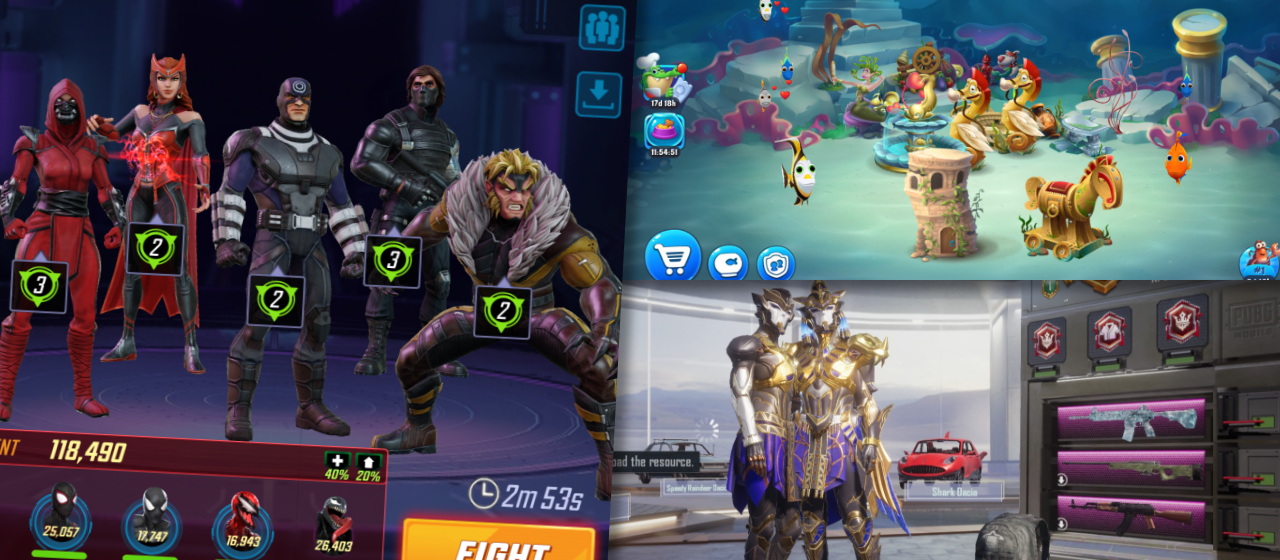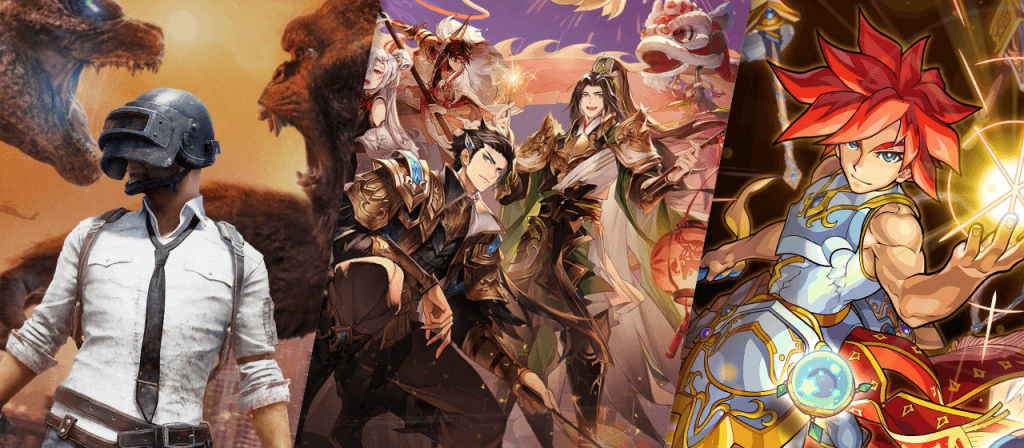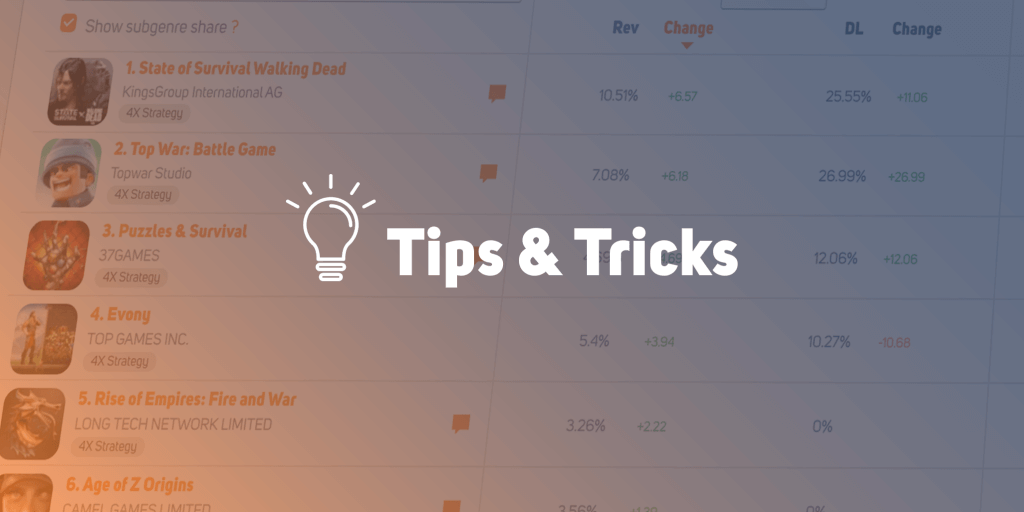Collections have always been a big part of the meta layer, especially in mid-core RPGs, but in the early days when it came to other mobile genres like shooters or casual games, to name a few, the simple core gameplay focused approach was compelling enough to keep the players interested. This has changed quite drastically in recent years as the mobile market and its players have matured and are looking for more in-depth elements from all genres.
As a result, collections have found their way to almost all types of mobile games, such as competitive shooters with cosmetic skins, 4x strategy games with character and equipment collecting focus, and casual games with decorative card/sticker albums to fill.
In this light, it’s no surprise that the overall number of games having collectibles albums has more than doubled during the past four years when looking at the US markets. Moreover, this trend is even stronger within the top 100 grossing games, where the utilization of collectibles albums has skyrocketed from 21% to 72%. In other words, a huge majority of games in the top 100 have some kind of collectibles mechanics in place.
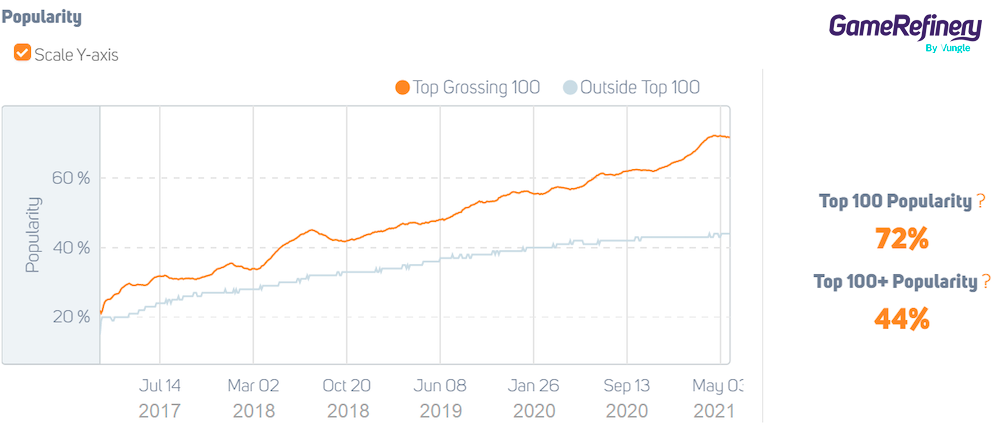
Why should you use collection systems?
As discussed, the majority of mobile gamers nowadays, whether midcore or casual, are looking for deeper gaming experiences and more layers in addition to the regular core gameplay. Meta-game elements, such as collections, add possibilities to offer just that while also tapping into the psychological satisfaction you get from progressing and completing long-term goals and, in many cases, showboating to others.
Collections are also a proven way to differentiate in the market and bring new motivational drivers to the game. This is extremely useful when you’re looking to grow your player base and find ways to cater to larger audiences with different motivations for playing games. A good example in the casual genre is a motivational comparison of some of the leading match3s Candy Crush Saga, recent hit Project Makeover, and Disney Emoji Blitz.

Project Makeover has been able to differentiate in the highly competitive match3 market by tapping on those Collecting Treasure and Customization & Decoration motivations with its innovative combination of dress-up and decor customization and collecting elements. Disney Emoji Blitz caters to the Collecting Treasure motivation even more with its unique collectible character meta focus.
Probably the best thing about collection elements is that they can be tailored to fit easily to any core layer without changing the game too much or breaking the in-game balance. Additionally, collections bring with them a whole new set of monetization sinks that do not necessarily touch the core game or introduce unwanted pay-to-win elements.
Thanks to this versatility and increased utilization of collections, you can find a nice variety of implementations of this trending feature across all genres. Next, we’ll be taking a look at some interesting prime examples of how top-grossing games are utilizing collection systems to their advantage.
Best In Class Implementations of Collection Systems
Board Kings – collectible sticker album
Unique casual game Board Kings spices up its board building construction meta by adding a very detailed and visually appealing collectibles sticker album, which is nowadays probably one of the game’s main engagement and monetization drivers. This sticker album has limited time “seasons,” which always introduce a new collectible set with a unique theme and a massive set of stickers to collect. To maintain the gameplay balance, the stickers themselves are purely cosmetic and, aside from the rewards, don’t affect the dice/board core gameplay.
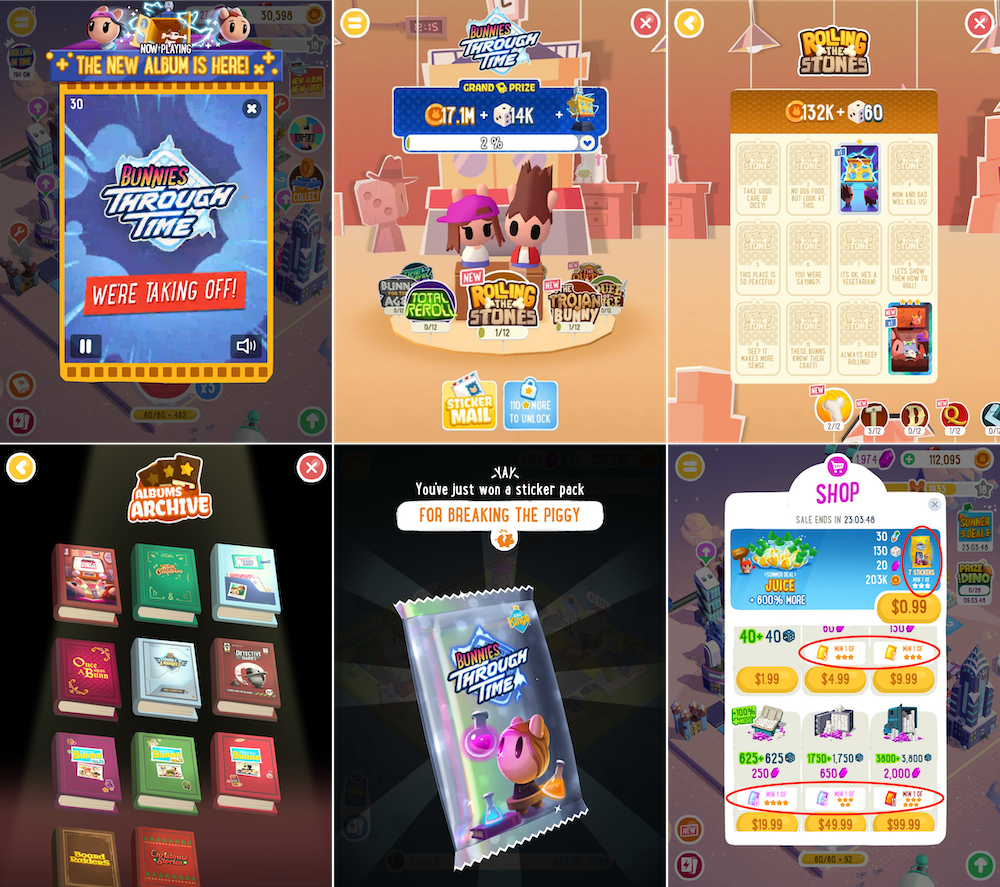
Each limited-time album contains various pages, each with its own theme. Collecting all the stickers of a page rewards players with currencies and dice rolls, and completing the whole album grants massive prizes, including an exclusive building to the player’s board.
The collection mechanic is tied all around the game as the sticker packs consisting of random stickers are gained from various core gameplay activities and also through regular IAP purchases. Gathering all the stickers during an event period requires a considerable amount of effort (or money), but it’s made a tad bit easier as you’re able to request and receive stickers from your friends.
Pixel Gun 3D – weapon collection gallery
FPS game Pixel Gun 3D has always had a weapon collection and upgrading focused meta. Still, instead of incentivizing players to collect a wide collection of different weapons, it’s been more about getting only the weapons you like and use regularly. To introduce a “gotta catch ‘em all” collecting system, Pixel Gun launched a gallery feature that shows all the weapons in the game, what you currently have, what you’re still missing, and where to get the ones you’ve discovered.
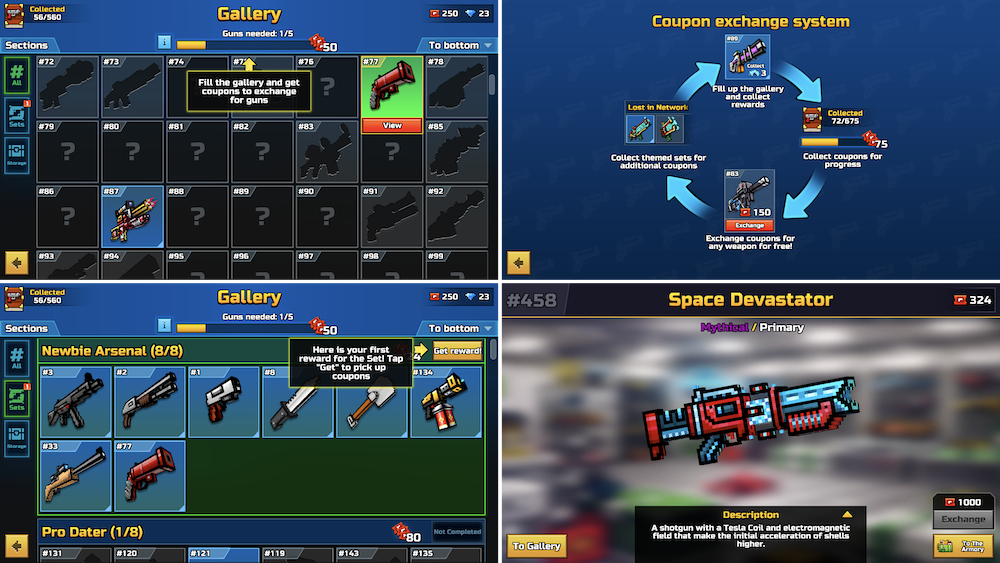
In addition to this, collecting weapons and weapon sets rewards players with special coupons used to purchase the most powerful weapons in the game. This coupon mechanic really amps up the motivation for players to get weapons they wouldn’t normally see as worth buying.
Marvel Strike Force – character collection
Marvel Strike Force is a true master class example of how to build a character collection system for an RPG title. In Marvel Strike Force, characters are acquired by gathering shards from gameplay, gachas, and offers with new characters introduced regularly to the pool (e.g., whenever Marvel movies or series are released).
What makes this collection meta so special is the gameplay incentives built all around the game and events for gathering a wide collection of characters and forming various kinds of teams.
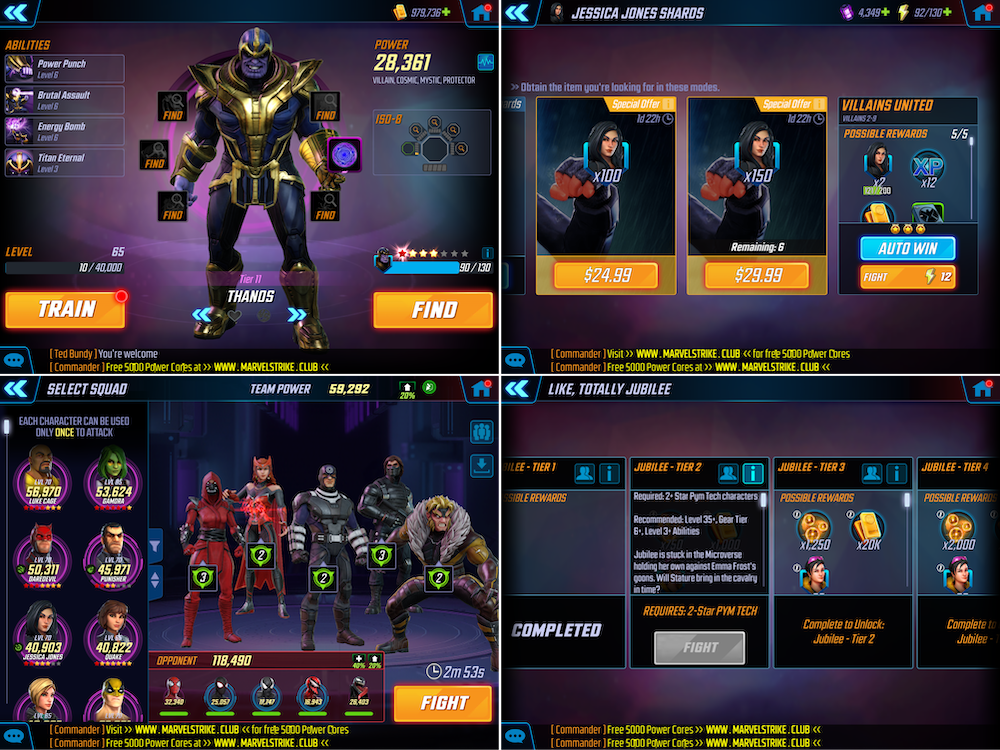
Marvel Strike Force has several modes where you need to utilize certain types of characters or have multiple different teams. For example, in Alliance War, each hero per player can be used only once in defense or offense. Moreover, as there are deep synergy connections between heroes, it’s important to focus on the collection/development of whole teams instead of just individual characters. To make collections an even more integral part of success, certain legendary characters can be unlocked only by having certain heroes at specific levels (e.g., five 5-star X-men characters to unlock Magneto).
As you can see, Marvel Strike Force uses several mechanics to amplify players’ desire and need to collect and develop an extensive roster of different hero characters – it’s the only way you can truly be successful in the long run!
AFK Arena – collection permanent stat boost
Idle RPG title AFK Arena’s meta is also focused on forming teams of characters and upgrading them to become more powerful. There are plenty of ways to get stronger, and one of these is a mechanic called Unions, a feature that gives you permanent stat boosts for collecting characters of different unions.
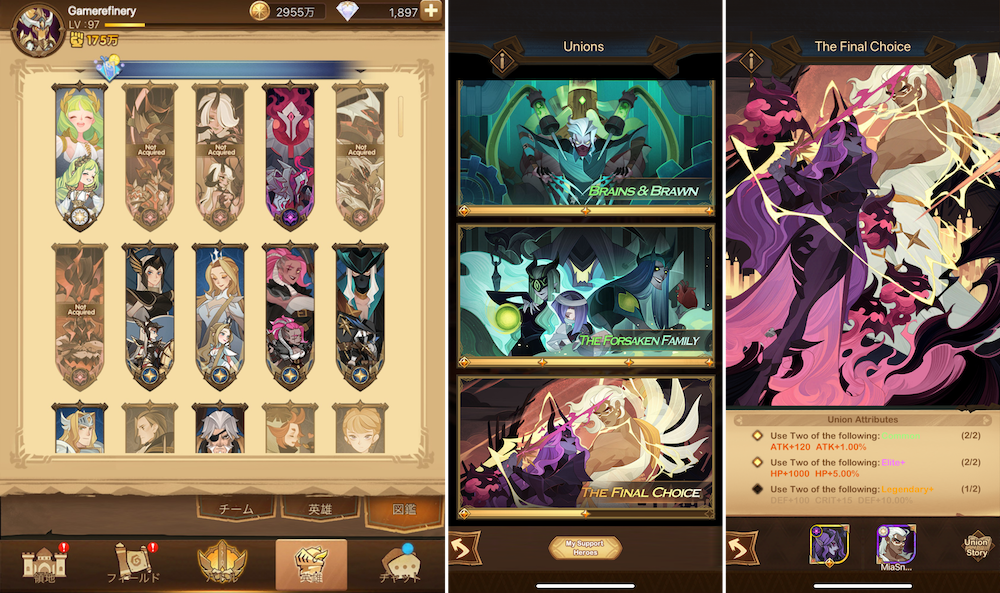
The Union boost unlocks once the player has collected and upgraded the required characters through ascension. This again incentivizes players to form a more diverse character portfolio and power up characters they would not normally even use.
PUBG Mobile – cosmetic collection system
Battle Royale PUBG Mobile has an incredible range of different cosmetic items to collect, including weapon skins, player outfits, accessories, car skins, and more minor cosmetics like music tracks, emotes, and avatar icons. Usually, new items are introduced as exclusive rewards from seasonal, limited-time events, making them even more desirable.
The key factor of the cosmetic economy revolves around “showing off” to other players during the gameplay. To enhance this aspect further, PUBG recently added a Showroom feature, where players can show off their favorite cosmetics to other players outside regular gameplay/matches.
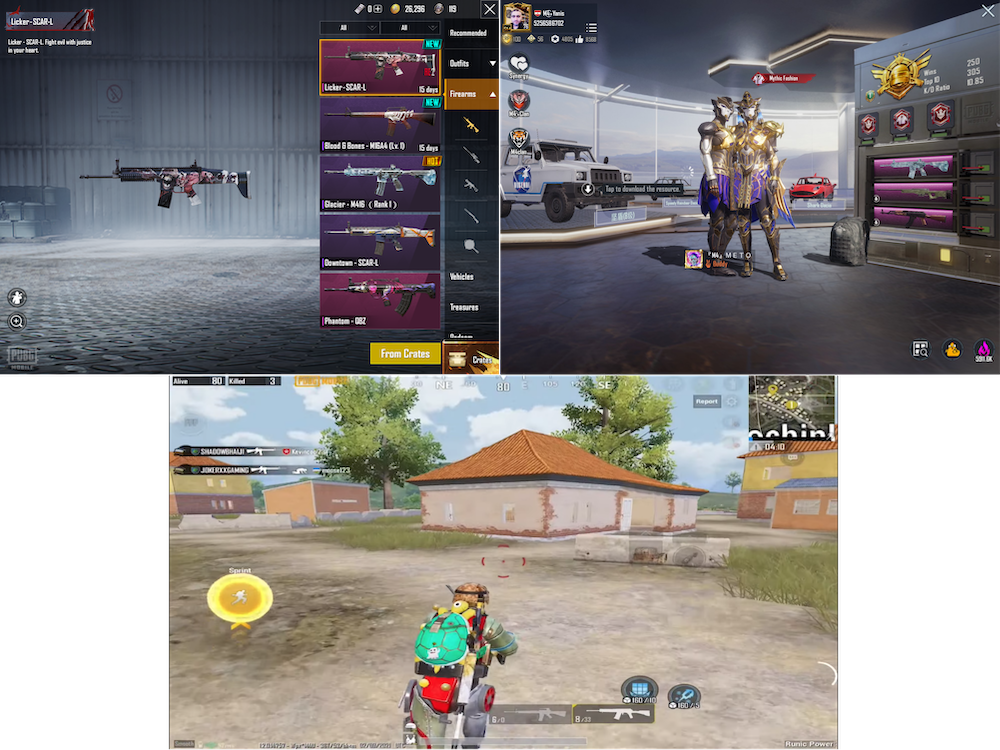
Another new addition that made collections an even more significant part of the game is the Season Gallery collectibles album, which shows all the possible cosmetic items of the current and past seasons’ events. Collecting all the items of a specific collection rewards the players with additional exclusive rewards, e.g., avatar pictures, frames, and special gacha coupons. As there are always multiple events running simultaneously, players can easily view how each item can be acquired and compare their collection completion percentage against other players.
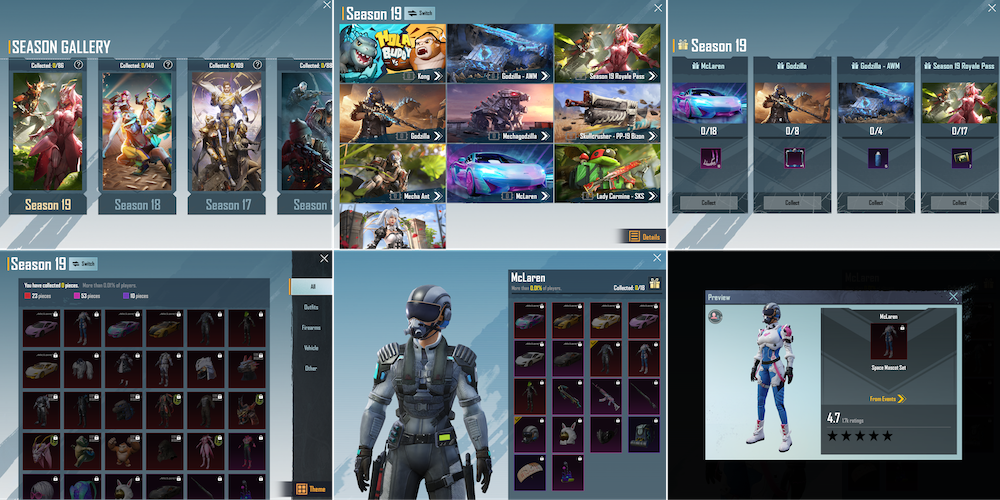
If you’re interested in reading more about PUBG Mobile’s comprehensive in-game systems, be sure to check out our deep dive into its unique Battle Pass mechanics!
Fishdom – fish bowl collection & decoration
We looked earlier at how a couple of match3 games utilize innovative collection elements to differentiate and widen their motivational appeal in the highly competitive match3 market. Besides those, Fishdom is also a successful prime example with its unique collection layer built on top of the classic match3 core gameplay.
Players collect dozens of different fish and decorations for their fishbowls. Once a fishbowl is fully decorated, a new one opens, making the bowls themselves feel like unique collectible objects. Players can always come back to admire the ones they have already decorated. The fish and decorations are purchased with various currencies gained from completing the match3 levels.
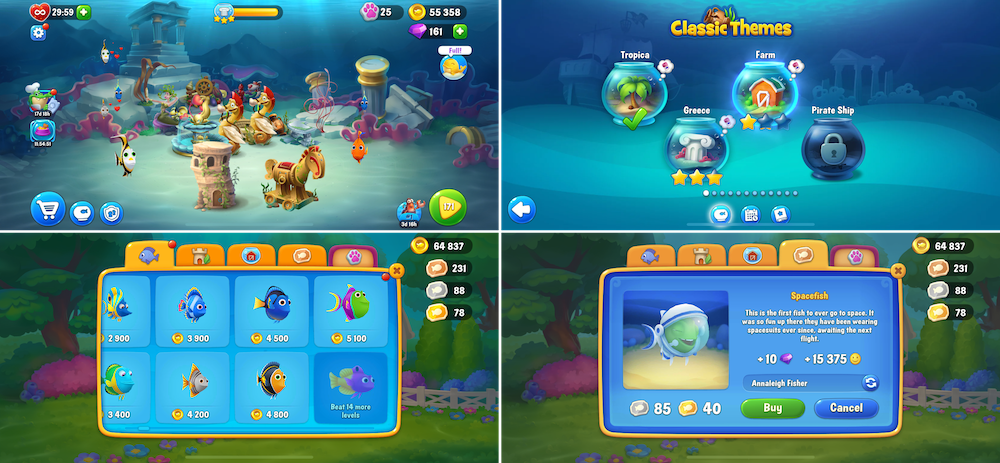
There are also seasonal, limited-time Fish Bowls that are decorated with special fish/animals and decorations purchased with event currencies. Spending event currency to fill the seasonal bowl grants rewards such as consumable boosters and exclusive fish.

KartRider Rush – presenting collections to other players
Racing game KartRider Rush (跑跑卡丁车官方竞速版), which can be seen as the “Mario Kart of the Chinese market,” has players not just collecting cars and characters, but it also offers a huge variety of different cosmetic items to be earned and purchased from many different playing modes of the game. To show off these collections of cars and cosmetics, each player has their own “home instance” where they can place and admire their collections and accomplishments. This social aspect of presenting collections to others adds even more value and desire to the various collectibles of the game.
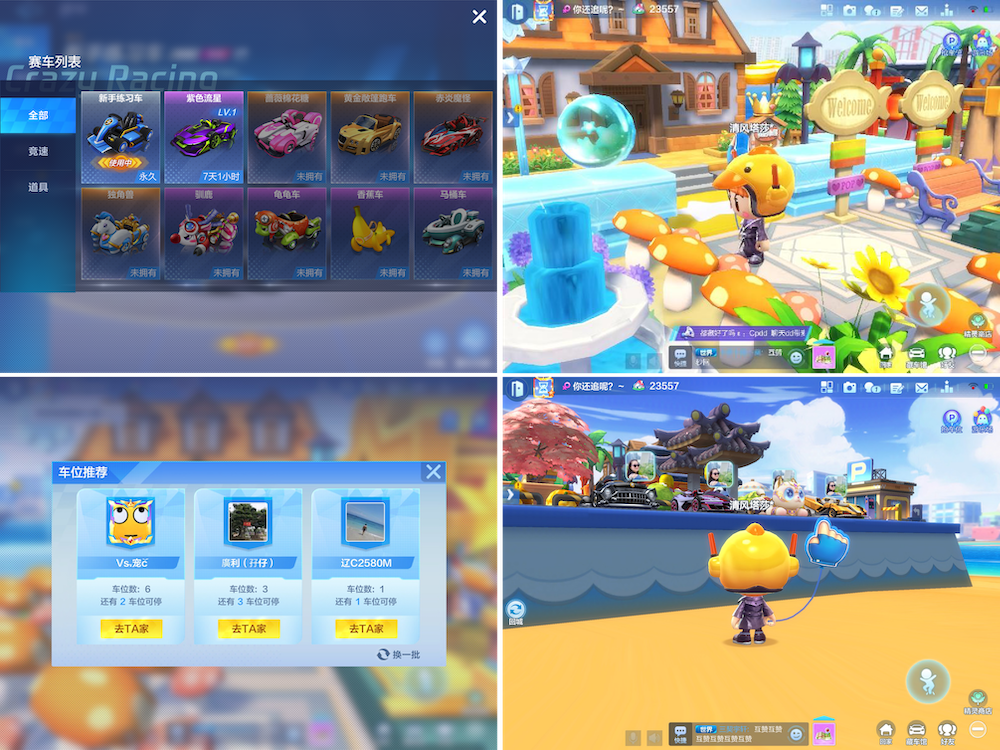
Key Fundamentals to Crafting the Perfect Collection System
As we’ve seen here, a collection meta is an incredibly versatile tool for creating new content on top of your core gameplay, driving player engagement and loyalty as well as enabling balanced, player-friendly monetization – across all genres.
To wrap things up, here’s the TL;DR of what we discussed and learned about well-constructed collection systems:
- Your collectible content has to be desirable and must have value → value can mean gameplay value, aesthetic value, or rarity/scarcity value.
- Use different rarities to signal players about the value of individual collectibles and how this perceived value compares across the collectibles system.
- Have a specific “place” for players to access their collectibles (e.g., a collectibles album), where they can see what they already have, what they could have, and how they can get what they don’t yet have.
- Reward players for gathering and completing collectibles and clearly signal why they should engage in collecting activities
- Give players the possibility to show and view collections of other players.
- For added synergies, link your collectible system to limited-time live events regularly.
It’s also good to remember that there are hundreds of other great examples of collections, and the easiest way to dive deeper into them is the GameRefinery Implementation Examples tool. There you can find and research hundreds of examples of how different games across all genres have implemented collectibles albums.
If you enjoyed reading this post, here are a few more you should definitely check out:

